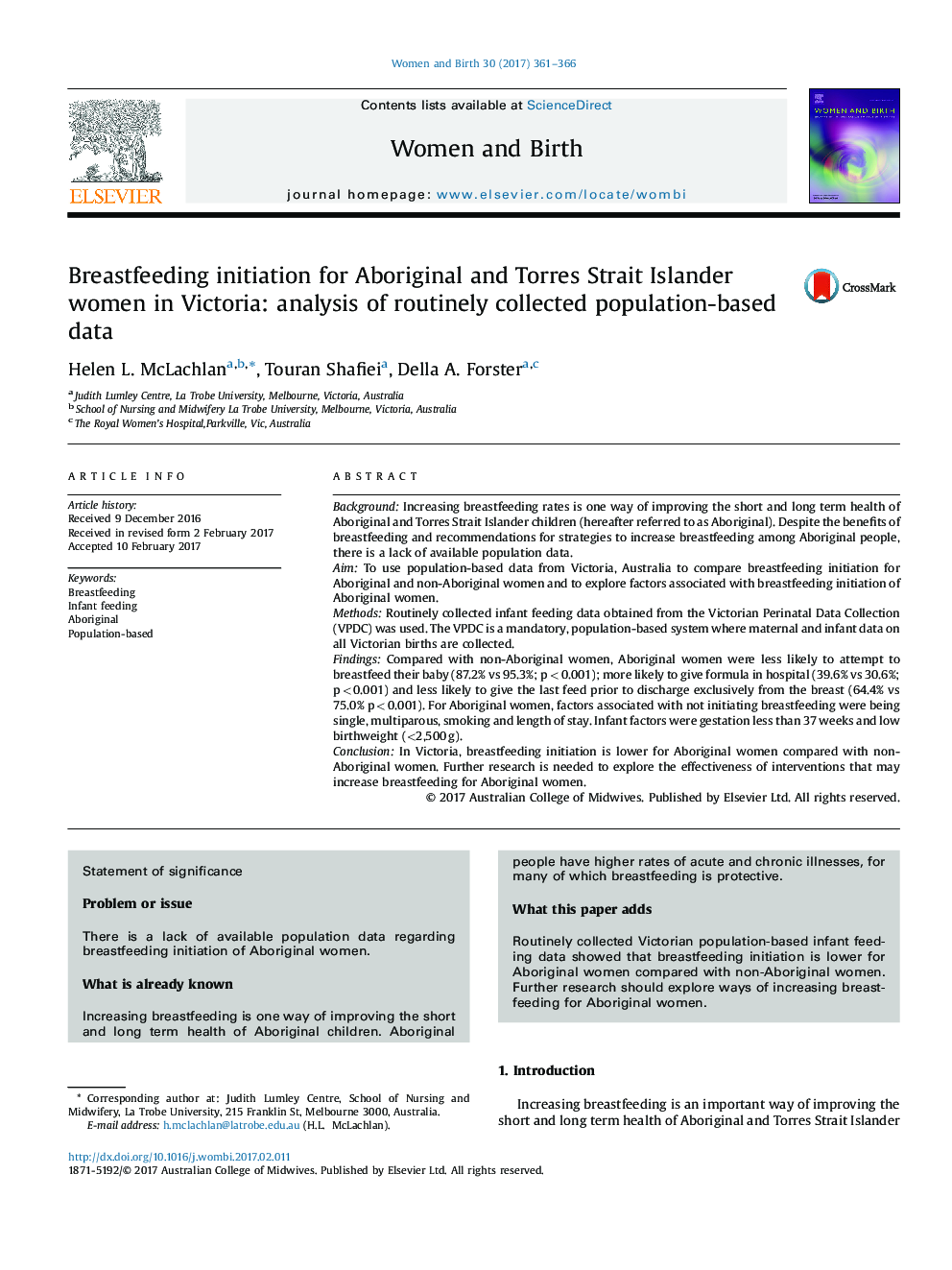| Article ID | Journal | Published Year | Pages | File Type |
|---|---|---|---|---|
| 5565965 | Women and Birth | 2017 | 6 Pages |
BackgroundIncreasing breastfeeding rates is one way of improving the short and long term health of Aboriginal and Torres Strait Islander children (hereafter referred to as Aboriginal). Despite the benefits of breastfeeding and recommendations for strategies to increase breastfeeding among Aboriginal people, there is a lack of available population data.AimTo use population-based data from Victoria, Australia to compare breastfeeding initiation for Aboriginal and non-Aboriginal women and to explore factors associated with breastfeeding initiation of Aboriginal women.MethodsRoutinely collected infant feeding data obtained from the Victorian Perinatal Data Collection (VPDC) was used. The VPDC is a mandatory, population-based system where maternal and infant data on all Victorian births are collected.FindingsCompared with non-Aboriginal women, Aboriginal women were less likely to attempt to breastfeed their baby (87.2% vs 95.3%; p < 0.001); more likely to give formula in hospital (39.6% vs 30.6%; p < 0.001) and less likely to give the last feed prior to discharge exclusively from the breast (64.4% vs 75.0% p < 0.001). For Aboriginal women, factors associated with not initiating breastfeeding were being single, multiparous, smoking and length of stay. Infant factors were gestation less than 37 weeks and low birthweight (<2,500 g).ConclusionIn Victoria, breastfeeding initiation is lower for Aboriginal women compared with non-Aboriginal women. Further research is needed to explore the effectiveness of interventions that may increase breastfeeding for Aboriginal women.
